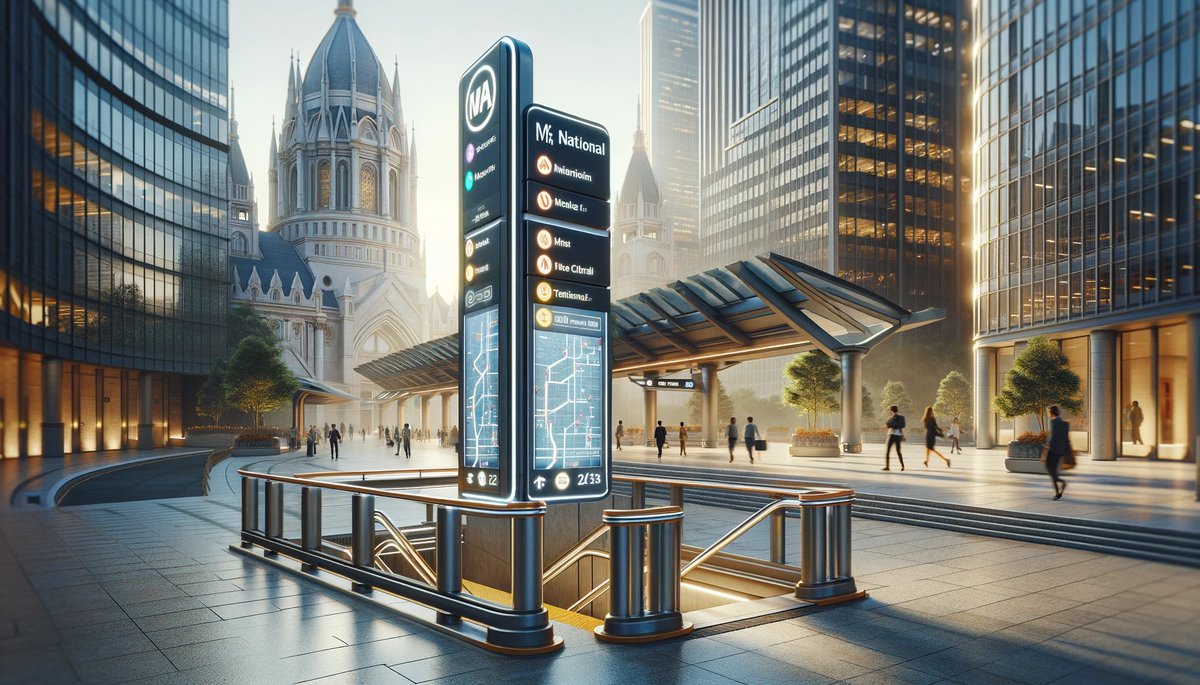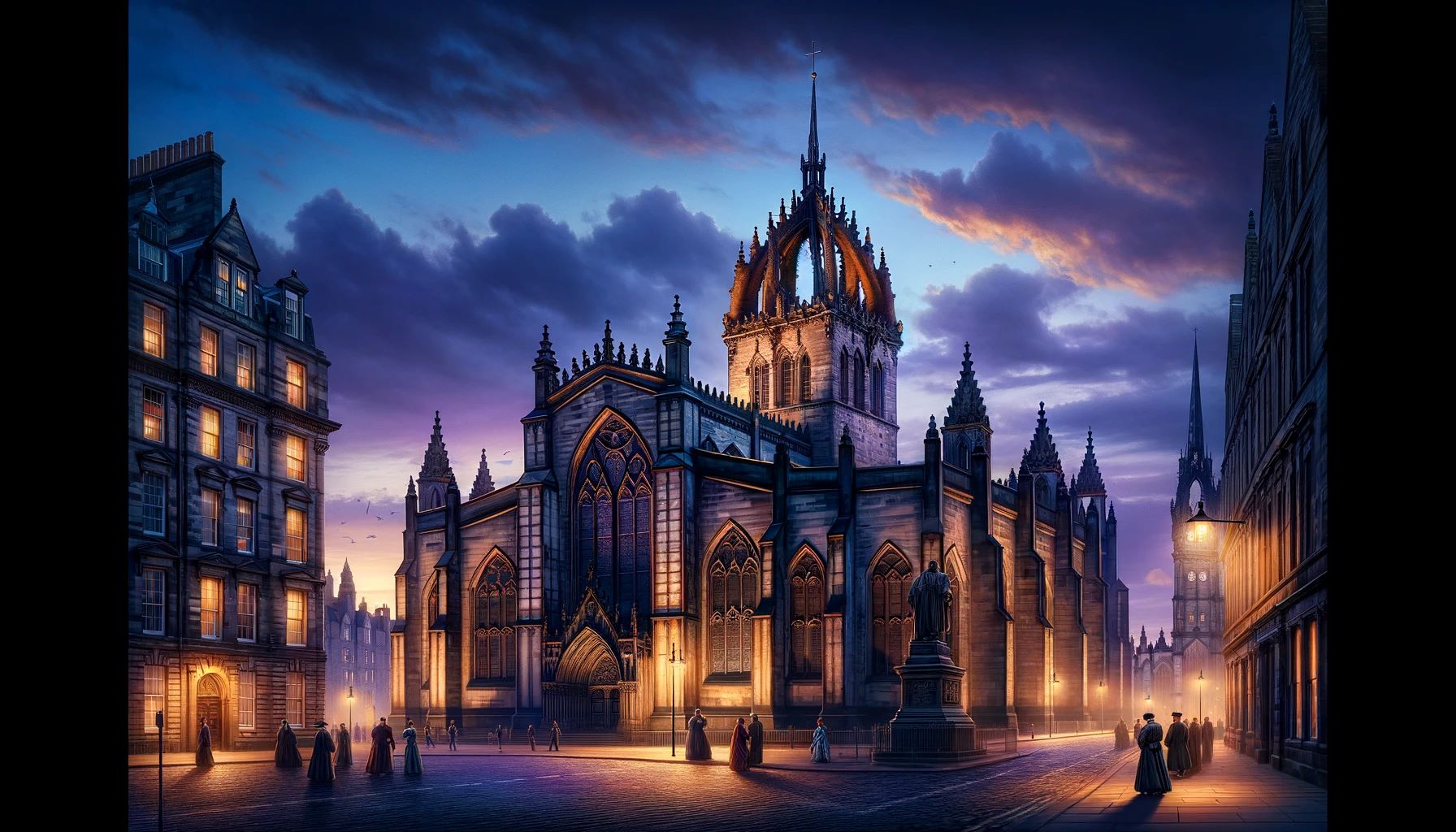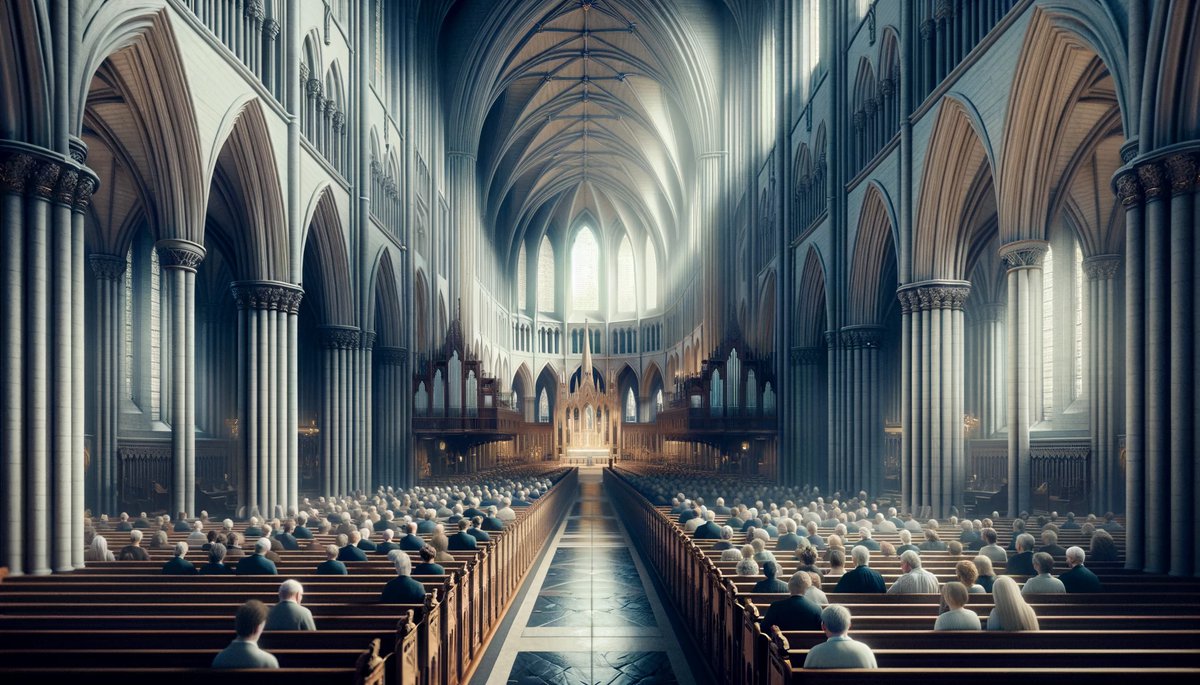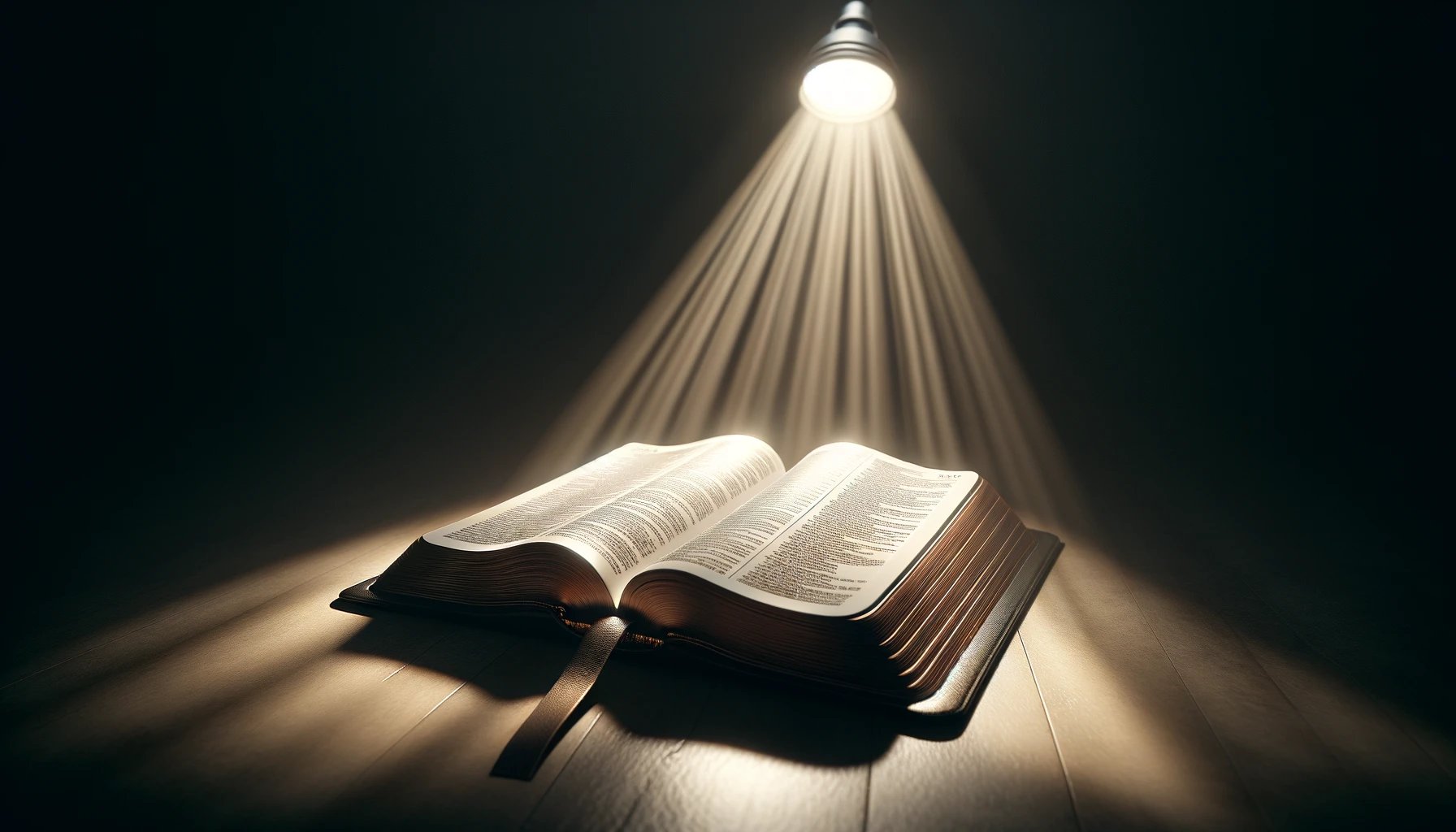Home>Arts and Culture>What Religion Is National Cathedral In Washington DC


Arts and Culture
What Religion Is National Cathedral In Washington DC
Published: February 18, 2024
Peter Smith, Editorial Director at Christian.net, combines deep insights into faith, politics, and culture to lead content creation that resonates widely. Awarded for his contributions to religious discourse, he previously headed a major organization for religious communicators, enhancing dialogue on faith's societal impacts.
Discover the religious significance of the National Cathedral in Washington DC, a prominent landmark in the city's arts and culture scene. Explore its diverse religious services and events.
(Many of the links in this article redirect to a specific reviewed product. Your purchase of these products through affiliate links helps to generate commission for Christian.net, at no extra cost. Learn more)
Table of Contents
Introduction
The National Cathedral, officially known as the Cathedral Church of Saint Peter and Saint Paul in the City and Diocese of Washington, is a majestic and iconic structure nestled in the heart of Washington, D.C. This architectural marvel stands as a testament to the rich tapestry of history, faith, and culture that defines the United States. With its soaring spires and intricate Gothic design, the National Cathedral commands attention and reverence, drawing visitors from across the globe to marvel at its grandeur.
As a prominent landmark in the nation's capital, the National Cathedral holds a significant place in the collective consciousness of the American people. Beyond its architectural splendor, the cathedral serves as a spiritual and cultural touchstone, embodying the values and aspirations of a diverse and dynamic society. Its presence resonates with a profound sense of tradition and spirituality, offering a sanctuary for reflection, worship, and communal gatherings.
The National Cathedral stands as a living testament to the enduring power of human creativity and devotion, transcending its physical form to inspire awe and contemplation. Whether viewed from afar against the backdrop of the city skyline or experienced up close within its hallowed halls, the cathedral exudes a timeless allure that beckons individuals to explore its history, artistry, and spiritual significance.
In the following sections, we will delve into the captivating history of the National Cathedral, explore its religious affiliations, and shed light on its pivotal role in the cultural landscape of Washington, D.C. Additionally, we will examine the controversies that have surrounded the cathedral's religious identity, offering a comprehensive understanding of this revered institution and its place in American society.
Read more: What Is The Cathedral In Washington, DC
History of National Cathedral
The history of the National Cathedral is a captivating saga that spans over a century, marked by visionary ambition, unwavering dedication, and the enduring spirit of community. The origins of this monumental undertaking can be traced back to the late 19th century when a group of influential figures, including President Benjamin Harrison and Chief Justice Melville Fuller, envisioned the creation of a grand cathedral that would stand as a testament to the nation's faith and heritage.
The cornerstone of the cathedral was laid in 1907, with President Theodore Roosevelt in attendance, marking the commencement of an ambitious architectural endeavor that would unfold over decades. Designed in the Gothic style, the cathedral's construction was guided by a commitment to meticulous craftsmanship and artistic expression, resulting in a structure that seamlessly blends spiritual symbolism with architectural magnificence.
However, the cathedral's journey was not without its challenges. The project faced numerous setbacks, including financial constraints and the disruptive impact of World War I, which necessitated a pause in construction. Despite these obstacles, the unwavering dedication of the cathedral's supporters and the skilled labor of artisans and craftsmen ensured that the vision of a grand national sanctuary persisted.
In 1976, nearly 83 years after the laying of its cornerstone, the National Cathedral was officially completed, culminating in a momentous achievement that echoed the aspirations of generations past. The cathedral's intricate carvings, breathtaking stained glass windows, and soaring arches stand as a testament to the enduring legacy of human creativity and devotion.
Today, the National Cathedral stands as a living testament to the enduring power of human ingenuity and faith, welcoming visitors from around the world to marvel at its architectural splendor and partake in its rich tapestry of spiritual and cultural offerings. Its history is a testament to the resilience and determination of those who sought to create a sacred space that would transcend time and inspire generations to come.
Religious Affiliation of National Cathedral
The National Cathedral stands as a revered symbol of religious diversity and inclusivity, reflecting the ethos of openness and acceptance that defines the American spirit. While the cathedral is often associated with the Episcopal Church, it is important to recognize that it serves as a spiritual home for individuals of various faith traditions, embodying a spirit of interfaith dialogue and cooperation.
As an Episcopal cathedral, the National Cathedral operates within the framework of the Episcopal Church, embracing the liturgical practices and theological tenets that characterize this Christian denomination. The cathedral's affiliation with the Episcopal Church is evident in its governance structure, with the presiding bishop of the Episcopal Church serving as the chief ecclesiastical authority for the cathedral.
However, the religious identity of the National Cathedral extends beyond the boundaries of a single denomination. The cathedral has long been committed to fostering interfaith understanding and collaboration, welcoming individuals from diverse religious backgrounds to participate in its services, events, and outreach initiatives. This inclusive approach is exemplified through the cathedral's engagement with leaders and communities representing various faith traditions, promoting dialogue, mutual respect, and shared values.
Moreover, the National Cathedral serves as a platform for addressing pressing social and ethical issues, advocating for justice, compassion, and solidarity across religious lines. Through its programming and partnerships, the cathedral actively seeks to bridge religious divides and cultivate a sense of unity amidst the rich tapestry of beliefs and practices that characterize contemporary society.
In essence, the National Cathedral's religious affiliation transcends denominational boundaries, embracing a spirit of ecumenism and interfaith cooperation that underscores the universal principles of love, compassion, and understanding. Its commitment to fostering a welcoming and inclusive environment reflects a profound dedication to honoring the diverse expressions of faith that enrich the fabric of American society.
The National Cathedral's religious affiliation serves as a testament to the enduring values of tolerance and mutual respect, embodying a vision of spiritual unity that resonates with individuals from all walks of life. As a cherished symbol of religious pluralism, the cathedral stands as a beacon of hope and harmony, inviting people of every faith tradition to gather in fellowship and celebration of the shared human experience.
Role of National Cathedral in Washington DC
The National Cathedral in Washington, D.C., transcends its role as a mere architectural wonder and spiritual sanctuary, assuming a multifaceted significance that extends far beyond its physical presence. As an iconic landmark deeply intertwined with the cultural and social fabric of the nation's capital, the cathedral plays a pivotal role in shaping the collective identity of Washington, D.C., and the broader American landscape.
First and foremost, the National Cathedral serves as a hallowed space for spiritual contemplation, offering solace and inspiration to individuals from diverse religious backgrounds. Its sacred halls provide a refuge for prayer, meditation, and communal worship, fostering a sense of tranquility and introspection amidst the bustling energy of the city. The cathedral's rich tapestry of religious services, including traditional Anglican liturgies, interfaith gatherings, and special ceremonies, reflects its commitment to nurturing a spirit of inclusivity and reverence for the sacred.
Beyond its spiritual dimensions, the National Cathedral stands as a vibrant center for cultural and artistic expression, hosting a myriad of events that celebrate the intersection of faith, music, and the visual arts. From captivating organ recitals and choral performances to thought-provoking lectures and art exhibitions, the cathedral serves as a dynamic platform for creative expression and intellectual engagement. Its commitment to fostering a vibrant cultural milieu enriches the lives of residents and visitors alike, offering a space for dialogue, creativity, and the celebration of human creativity.
Moreover, the National Cathedral assumes a profound civic role, serving as a venue for national ceremonies, interfaith dialogues, and public forums that address pressing social and ethical issues. As a symbol of unity and compassion, the cathedral has hosted significant events, including state funerals, memorial services, and interfaith gatherings that seek to promote understanding and solidarity in times of national significance. Its role as a convener of diverse voices and perspectives underscores its commitment to fostering a more just, compassionate, and inclusive society.
In essence, the National Cathedral stands as a living testament to the enduring power of faith, art, and community, embodying a vision of harmony and enlightenment that resonates with the spirit of Washington, D.C. Its multifaceted role as a spiritual sanctuary, cultural hub, and civic forum underscores its profound impact on the collective consciousness of the nation's capital, enriching the lives of all who are touched by its timeless presence.
Controversies Surrounding National Cathedral's Religious Affiliation
The National Cathedral's religious affiliation has been the subject of significant debate and scrutiny, giving rise to controversies that reflect broader tensions within American society. One of the most notable controversies pertains to the cathedral's status as an Episcopal institution and its engagement with interfaith initiatives. Critics have raised concerns about the perceived dilution of the cathedral's Christian identity due to its inclusive approach to religious diversity. Some have argued that the cathedral's commitment to interfaith dialogue and cooperation undermines its fidelity to traditional Christian doctrine and practice, sparking contentious discussions about the boundaries of religious inclusivity within a Christian institution.
Furthermore, the National Cathedral's decision to host events and ceremonies that transcend traditional Christian liturgical practices has sparked controversy among conservative factions within the Episcopal Church and the broader Christian community. The cathedral's willingness to embrace non-Christian religious observances and ceremonies, such as interfaith prayer services and events honoring non-Christian religious traditions, has elicited strong reactions from those who advocate for a more orthodox interpretation of Christian faith and worship. This tension has underscored the complexities of navigating religious pluralism within the context of a historically Christian institution, prompting soul-searching conversations about the evolving nature of religious identity in contemporary society.
Additionally, the National Cathedral's stance on social and ethical issues, including its vocal advocacy for LGBTQ+ rights and environmental stewardship, has generated controversy among individuals and groups who hold more conservative theological perspectives. The cathedral's public engagement with progressive social causes has led to accusations of straying from orthodox Christian teachings, igniting debates about the role of religious institutions in shaping public discourse and advocating for social change. These controversies have highlighted the inherent tensions between tradition and progress within the context of the cathedral's religious mission, prompting introspection and dialogue within the broader religious community.
In navigating these controversies, the National Cathedral has sought to uphold its commitment to fostering a welcoming and inclusive environment while honoring its Christian heritage. The cathedral's leadership has emphasized the importance of embracing diverse perspectives and engaging in constructive dialogue, viewing these controversies as opportunities to deepen understanding and strengthen the bonds of community. By acknowledging the complexities inherent in navigating religious pluralism and social advocacy, the National Cathedral continues to grapple with the challenges of balancing tradition and innovation within the context of its religious affiliation.
The controversies surrounding the National Cathedral's religious affiliation serve as a poignant reminder of the ongoing evolution of religious institutions in a rapidly changing world. As the cathedral navigates these complexities, it remains steadfast in its dedication to serving as a place of spiritual nourishment, cultural enrichment, and civic engagement for all who seek its hallowed embrace.
Conclusion
In conclusion, the National Cathedral in Washington, D.C., stands as a testament to the enduring power of faith, art, and community, embodying a vision of harmony and enlightenment that resonates with the spirit of the nation's capital. Its rich history, spanning over a century, reflects the unwavering dedication and resilience of those who sought to create a sacred space that transcends time and inspires generations to come. From its visionary inception to its completion, the cathedral's journey has been marked by a commitment to meticulous craftsmanship and artistic expression, resulting in a structure that seamlessly blends spiritual symbolism with architectural magnificence.
The religious affiliation of the National Cathedral, while rooted in the Episcopal tradition, extends beyond denominational boundaries, embracing a spirit of ecumenism and interfaith cooperation. The cathedral's inclusive approach serves as a beacon of hope and harmony, inviting people of every faith tradition to gather in fellowship and celebration of the shared human experience. Its multifaceted role as a spiritual sanctuary, cultural hub, and civic forum underscores its profound impact on the collective consciousness of the nation's capital, enriching the lives of all who are touched by its timeless presence.
Despite controversies surrounding its religious identity, the National Cathedral remains steadfast in its commitment to fostering a welcoming and inclusive environment while honoring its Christian heritage. The cathedral's engagement with diverse perspectives and constructive dialogue reflects its resilience in navigating the complexities of religious pluralism and social advocacy. As it continues to grapple with the challenges of balancing tradition and innovation, the National Cathedral stands as a living testament to the enduring values of tolerance and mutual respect, embodying a vision of spiritual unity that resonates with individuals from all walks of life.
In essence, the National Cathedral serves as a vibrant symbol of religious diversity and inclusivity, reflecting the ethos of openness and acceptance that defines the American spirit. Its role as a hallowed space for spiritual contemplation, a vibrant center for cultural and artistic expression, and a profound civic venue underscores its enduring significance in shaping the cultural and social landscape of Washington, D.C. As visitors from around the world continue to marvel at its architectural splendor and partake in its rich tapestry of spiritual and cultural offerings, the National Cathedral remains a timeless beacon of faith, art, and community, inviting all to find solace, inspiration, and unity within its sacred embrace.














